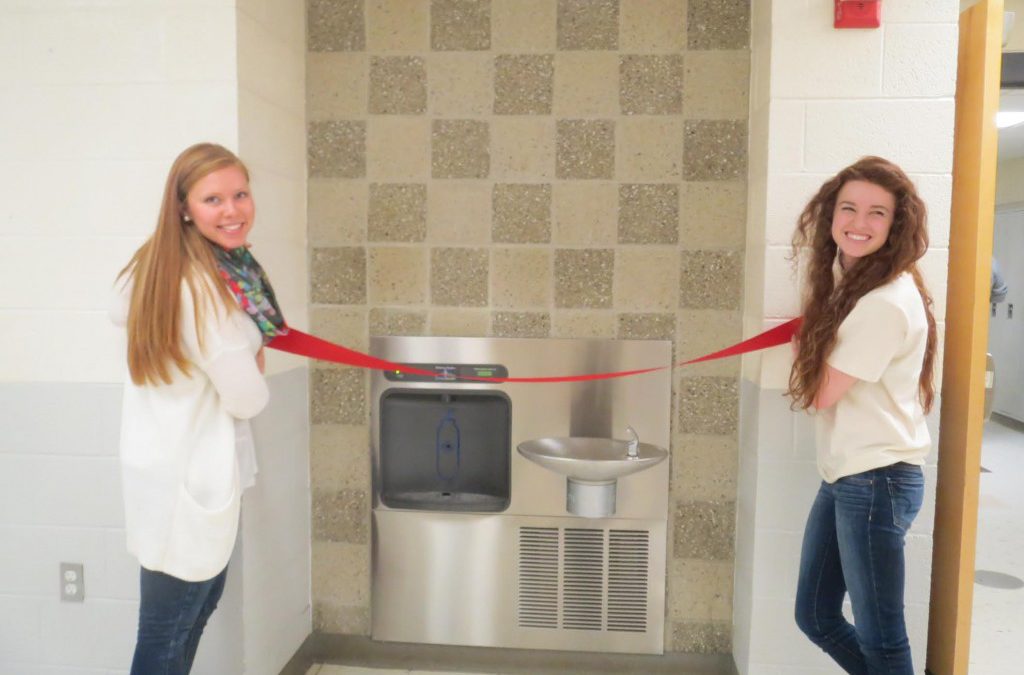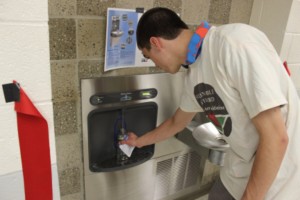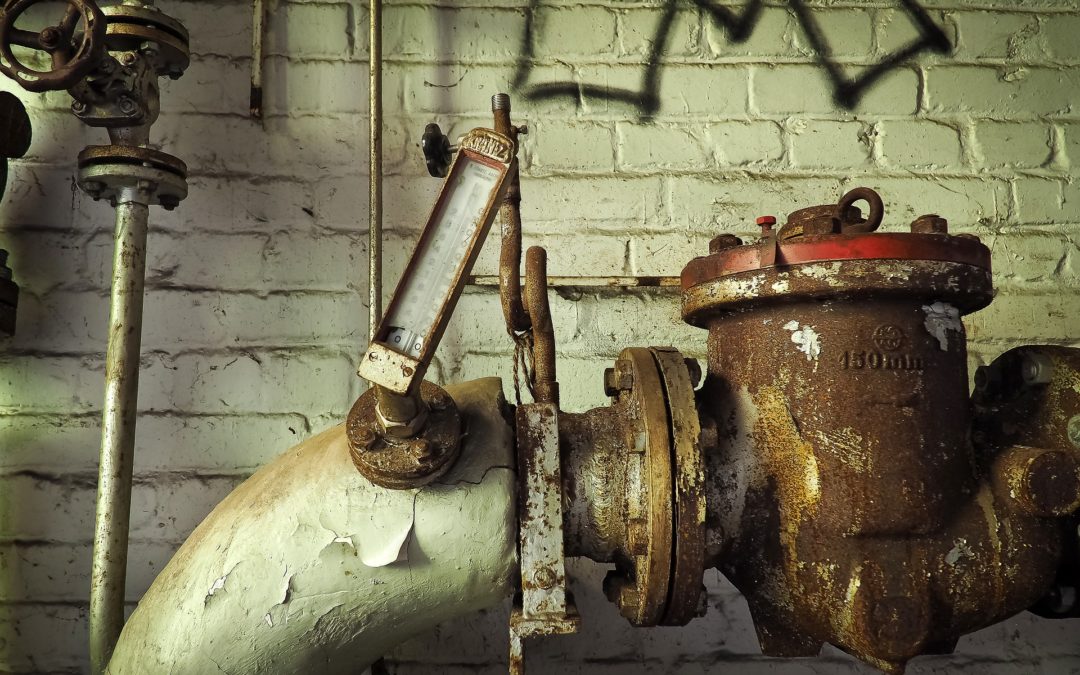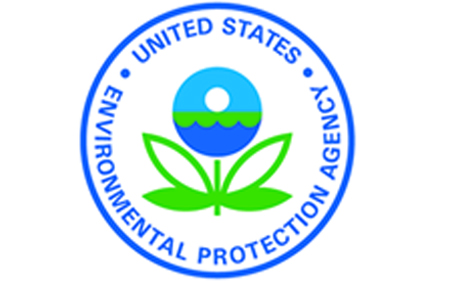
Westford Academy Bottle Filling Stations Give Hope for Saving Plastic
Now we’re on to a slightly older, yet just as impassioned, group of interns at Westford Academy. With the help of Sustainable Westford, the Westford Academy Student Council and a couple of eager seniors, over 20,000 plastic bottles have been saved with the installation of two bottle filling stations in the tight-knit community.

One intern, Emily Wood, came into her internship at Sustainable Westford with a great passion for water and a feeling of disgust towards the negative effects single-use bottles have on human and environmental health. Brainstorming with Gloria, she came up with a solution: installing bottle filling stations on their school campus.
With Gloria’s help, Emily spearheaded the campaign, speaking in front of Student Council and convincing them of the positive effects a bottle filling station would have on the community. After six months of connecting with student council members, talking to teachers and organizing her peers, Emily and Sustainable Westford were able to receive enough funding to install two bottle filling stations in the local school.
“I wanted to make sure people knew why this was so important and what a positive impact they were having,” she explained. To do so, Emily prioritized not only raising the money for installing the station, but the important educational piece that came with it. She created videos for the school announcements, touting the benefits of having such plastic-saving stations in the school. Once the bottle filling stations were installed, she was sure to organize a large ribbon cutting ceremony to remind her peers of the monumental part they were playing in reducing plastic and valuing their water supply.

As Sustainable Westford has proven, a little initiative and passion goes a long way in making change when it comes to saving plastic. Emily has since graduated, and a new group of interns, Nancy and David, have stepped in her place. While Nancy is passionately involved with the organization’s upcycling initiative, “which turns items such as whiteboard markers and granola bars into reusable accessories like backpacks or pencil cases”, David has been an effective part of planning and executing their winter film series. Talking to them via email, it was wonderful to see their passion for sustainability and the big things they’re working on at Sustainable Westford.
While our state may not have passed the Bottle Bill, there are so many ways to continue the fight against single-use bottles on a local level… even under the age of 18!
Want to start a campaign like this one at your school? Feel free to contact us!

















